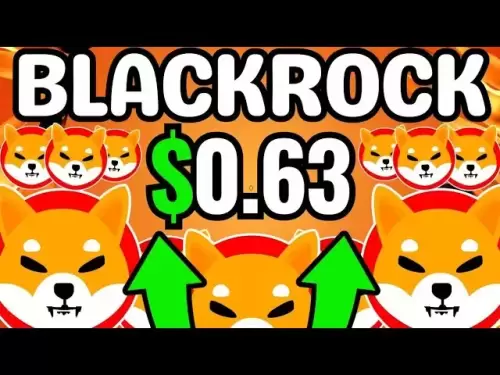-
 Bitcoin
Bitcoin $117700
-0.20% -
 Ethereum
Ethereum $3587
1.19% -
 XRP
XRP $3.422
-0.97% -
 Tether USDt
Tether USDt $1.000
-0.02% -
 BNB
BNB $733.3
0.69% -
 Solana
Solana $177.3
0.36% -
 USDC
USDC $0.9998
-0.01% -
 Dogecoin
Dogecoin $0.2446
1.42% -
 TRON
TRON $0.3183
-2.35% -
 Cardano
Cardano $0.8262
1.07% -
 Hyperliquid
Hyperliquid $44.37
-0.24% -
 Stellar
Stellar $0.4597
-0.87% -
 Sui
Sui $3.841
2.27% -
 Chainlink
Chainlink $18.44
3.20% -
 Hedera
Hedera $0.2658
1.54% -
 Bitcoin Cash
Bitcoin Cash $518.2
0.50% -
 Avalanche
Avalanche $24.38
4.08% -
 Shiba Inu
Shiba Inu $0.00001491
1.30% -
 Litecoin
Litecoin $112.7
10.87% -
 UNUS SED LEO
UNUS SED LEO $8.991
0.16% -
 Toncoin
Toncoin $3.183
-0.13% -
 Polkadot
Polkadot $4.377
3.56% -
 Uniswap
Uniswap $10.16
1.35% -
 Monero
Monero $325.1
2.08% -
 Ethena USDe
Ethena USDe $1.001
-0.01% -
 Bitget Token
Bitget Token $4.922
0.29% -
 Pepe
Pepe $0.00001343
3.62% -
 Dai
Dai $0.9999
-0.01% -
 Aave
Aave $319.5
-0.89% -
 Bittensor
Bittensor $416.3
1.23%
How to find good entry and exit points for Bitcoin futures?
Bitcoin futures traders use technical analysis, volume, and sentiment to identify strategic entry and exit points, managing risk with tools like stop-loss orders and trailing stops.
Jul 19, 2025 at 05:14 pm

Understanding Bitcoin Futures and Their Unique Characteristics
Bitcoin futures are derivative contracts that allow traders to speculate on the future price of Bitcoin without owning the actual cryptocurrency. These contracts are standardized and traded on regulated exchanges such as CME Group and Binance Futures. Unlike spot trading, Bitcoin futures involve leverage, which can amplify both gains and losses. Understanding the mechanics of futures trading is essential before attempting to identify entry and exit points.
Futures contracts have expiration dates, and their prices may diverge from the spot price due to factors like funding rates, interest rates, and market sentiment. Traders must also consider the contango or backwardation of the futures curve, which reflects whether the futures price is above or below the expected future spot price.
Utilizing Technical Analysis for Entry Points
Technical analysis is a cornerstone of identifying favorable entry points in Bitcoin futures trading. Traders often use tools such as moving averages, Relative Strength Index (RSI), and Bollinger Bands to gauge momentum and potential reversals.
For instance, a golden cross occurs when the 50-day moving average crosses above the 200-day moving average, signaling a potential bullish trend. Conversely, a death cross may indicate a bearish shift. RSI levels below 30 can suggest oversold conditions, offering a potential long entry point, while RSI above 70 might signal overbought conditions for shorting opportunities.
Support and resistance levels are also critical in determining where to enter a trade. Historical price action can highlight zones where the price has previously reversed, offering a statistical edge when entering a position.
Leveraging Volume and Order Flow for Confirmation
Volume plays a crucial role in validating the strength of a price move. A breakout or breakdown accompanied by high trading volume is more likely to be sustainable than one with low volume. Traders can use volume profile to identify key price levels where the most trading activity has occurred, known as value areas.
In addition, order flow analysis helps traders understand the supply and demand dynamics in real time. By observing the bid-ask spread and the size of orders at different price levels, traders can anticipate potential market imbalances. For example, a large number of buy orders clustering at a specific price could indicate a strong support zone.
Time and sales data (also known as level 2 data) can further enhance decision-making by showing the sequence of trades and the aggressiveness of buyers or sellers. This insight allows traders to adjust their entry strategies based on real-time market behavior.
Setting Effective Exit Points Using Risk Management Tools
Determining exit points is just as important as identifying entry opportunities. Stop-loss and take-profit orders are essential tools for managing risk and locking in profits. A trailing stop can be particularly useful in volatile markets, as it adjusts the stop-loss level as the price moves in the trader’s favor.
One effective method is using volatility-based stops, where the stop-loss is placed at a distance proportional to the asset’s average true range (ATR). This helps avoid being stopped out prematurely due to normal price fluctuations. For example, if the ATR of Bitcoin is $500, placing a stop-loss beyond that range can provide more breathing room for the trade.
Profit targets can also be set using technical tools such as Fibonacci extensions or measured move projections. These tools help estimate how far a price move could extend, allowing traders to exit at logical levels rather than arbitrarily.
Incorporating Fundamental and Sentiment Analysis for Strategic Timing
While technical analysis is vital, fundamental and sentiment analysis should not be overlooked when determining entry and exit points. Macroeconomic events, regulatory changes, and institutional adoption can significantly impact Bitcoin’s price.
Monitoring on-chain metrics such as exchange inflows and outflows, whale activity, and miner behavior can provide insights into potential price movements. For instance, a sudden increase in exchange inflows might signal that holders are preparing to sell, potentially leading to a short-term price drop.
Social sentiment analysis through platforms like Twitter, Reddit, and Telegram can also influence trading decisions. Tools that aggregate and analyze sentiment from these platforms can help traders gauge whether the market is overly bullish or bearish, which is useful for contrarian strategies.
Frequently Asked Questions
Q: Can I rely solely on technical indicators to determine entry and exit points?
A: While technical indicators are powerful tools, they work best when combined with other forms of analysis such as volume, order flow, and sentiment. No single indicator guarantees success, and using multiple tools can increase the probability of making informed decisions.
Q: How do I handle false breakouts when trading Bitcoin futures?
A: False breakouts are common in volatile markets. One way to filter them is by waiting for a retest of the breakout level after the initial move. Additionally, confirming the breakout with volume and order flow can reduce the likelihood of entering a losing trade.
Q: What is the ideal risk-reward ratio for Bitcoin futures trading?
A: There is no universal ratio, but many professional traders aim for a minimum of 1:2 risk-reward. This means for every $1 risked, they aim to make $2 in profit. Adjusting this ratio based on market conditions and trade setup can improve long-term profitability.
Q: Should I use the same strategy for both long and short positions in Bitcoin futures?
A: While some strategies can be adapted for both directions, shorting futures involves unique risks such as unlimited downside and funding costs. It’s important to tailor your entry and exit criteria based on the direction of the trade and the prevailing market conditions.
Disclaimer:info@kdj.com
The information provided is not trading advice. kdj.com does not assume any responsibility for any investments made based on the information provided in this article. Cryptocurrencies are highly volatile and it is highly recommended that you invest with caution after thorough research!
If you believe that the content used on this website infringes your copyright, please contact us immediately (info@kdj.com) and we will delete it promptly.
- WLFI Token Trading Approved: From Trump Ties to Community Votes
- 2025-07-20 09:10:12
- CoinDCX's $44.2 Million Security Breach: A Wake-Up Call for Crypto Exchanges
- 2025-07-20 08:30:13
- Trump, WLFI, and Token Release: A New York Minute on Crypto
- 2025-07-20 08:30:13
- Ripple's RLUSD: The Bluechip Stablecoin Set to Disrupt the Market?
- 2025-07-20 08:50:11
- Bitcoin Price Action: Is Weakening Demand on the Horizon?
- 2025-07-20 08:50:11
- Ripple's RLUSD: Top-Ranked Stablecoin Shaking Up the Market
- 2025-07-20 08:55:12
Related knowledge

What is a maker vs a taker fee?
Jul 19,2025 at 01:14am
Understanding the Basics of Cryptocurrency Exchange FeesIn the world of cryptocurrency trading, maker vs taker fees are a fundamental concept that eve...

How to analyze Bitcoin futures data from CME?
Jul 19,2025 at 05:22pm
Understanding Bitcoin Futures on CMEBitcoin futures on the CME Group (Chicago Mercantile Exchange) represent a regulated financial instrument that all...

How to understand the liquidation price?
Jul 19,2025 at 10:00pm
What Is a Liquidation Price in Cryptocurrency Trading?In the realm of cryptocurrency futures and margin trading, the liquidation price refers to the s...

What is time in force (GTC, IOC, FOK)?
Jul 19,2025 at 08:57am
Understanding Time in Force in Cryptocurrency TradingIn the world of cryptocurrency trading, the Time in Force (TIF) is a crucial parameter that deter...

What is a partial liquidation?
Jul 19,2025 at 01:49am
Understanding the Basics of Partial LiquidationIn the world of cryptocurrency trading, especially within leveraged positions, partial liquidation refe...

How to find good entry and exit points for Bitcoin futures?
Jul 19,2025 at 05:14pm
Understanding Bitcoin Futures and Their Unique CharacteristicsBitcoin futures are derivative contracts that allow traders to speculate on the future p...

What is a maker vs a taker fee?
Jul 19,2025 at 01:14am
Understanding the Basics of Cryptocurrency Exchange FeesIn the world of cryptocurrency trading, maker vs taker fees are a fundamental concept that eve...

How to analyze Bitcoin futures data from CME?
Jul 19,2025 at 05:22pm
Understanding Bitcoin Futures on CMEBitcoin futures on the CME Group (Chicago Mercantile Exchange) represent a regulated financial instrument that all...

How to understand the liquidation price?
Jul 19,2025 at 10:00pm
What Is a Liquidation Price in Cryptocurrency Trading?In the realm of cryptocurrency futures and margin trading, the liquidation price refers to the s...

What is time in force (GTC, IOC, FOK)?
Jul 19,2025 at 08:57am
Understanding Time in Force in Cryptocurrency TradingIn the world of cryptocurrency trading, the Time in Force (TIF) is a crucial parameter that deter...

What is a partial liquidation?
Jul 19,2025 at 01:49am
Understanding the Basics of Partial LiquidationIn the world of cryptocurrency trading, especially within leveraged positions, partial liquidation refe...

How to find good entry and exit points for Bitcoin futures?
Jul 19,2025 at 05:14pm
Understanding Bitcoin Futures and Their Unique CharacteristicsBitcoin futures are derivative contracts that allow traders to speculate on the future p...
See all articles

























































































